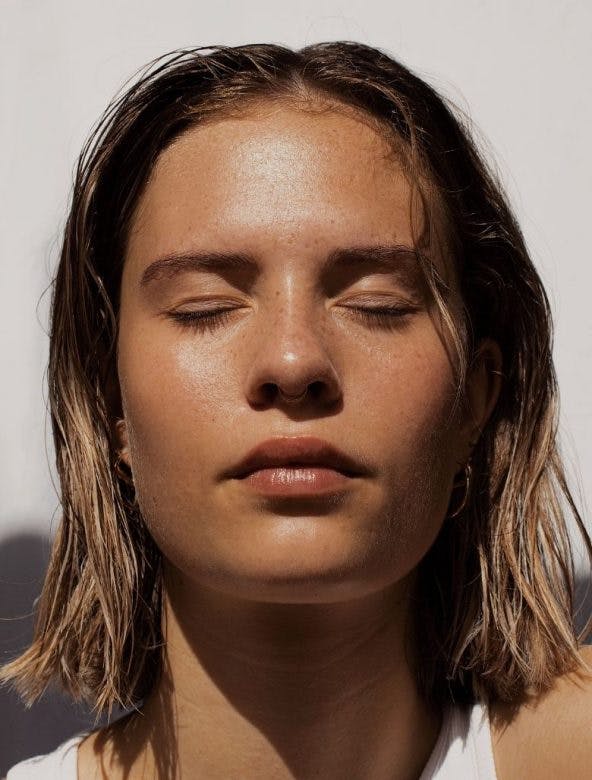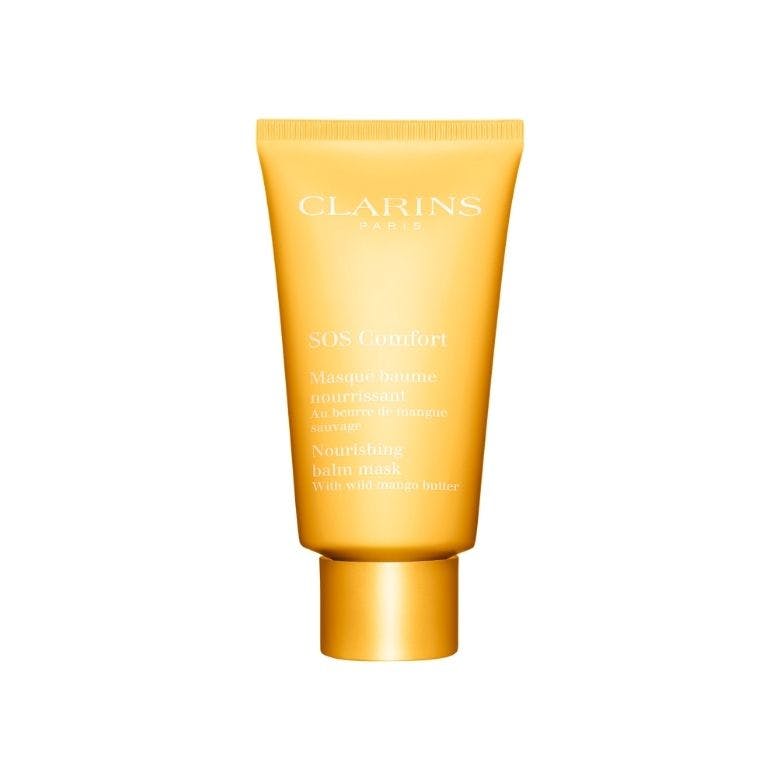How To Know Your Skin Type: Test Your Skin To Find Out
5 minutes read
With the time and money we invest into looking after our skin, you’d think we would know exactly what our skin needs. But, unfortunately, many of us make wrong assumptions, so learning how to know your skin type properly is all the more critical to providing the care it craves.
Different skin types require specific products and routines. So, whether you struggle with an oily T-zone or you’re fending off fine lines from dry skin, understanding skin types will help you find the right solutions to achieve your skincare goals.
Plus, when you get your regimen right without a plethora of jars gathering dust on your shelf, there’s less waste – both financially and environmentally.
What is a skin type?
Like your fingerprints, your skin is unique and nobody has the exact same skin that you do. Still, there are four different skin types that broadly help you determine your plan.
Charlotte McHale, Clarins Training Manager, helps to demystify skin types – so you can get the targeted products and treatments bespoke to you.

How to find your skin type?
McHale says, “At Clarins, our professional ‘skin analysis’ will help to determine not only skin type but work out the skin condition too.”
The four different skin types can generally be determined by simple observation. There are two skin type tests you can perform at home to help you understand what kind of skin you have in just a few minutes.
Test 1: The wash test
One of the best ways to determine your skin type is to observe how it behaves immediately after washing it. Here’s how:
- Wash your face with a mild cleanser.
- Gently pat your face dry.
- Do not apply any product or make-up.
- Wait 30 minutes.
If, after 30 minutes, your skin feels tight and is flaky or scaly, you likely have dry skin. If your face is shiny or greasy, you have oily skin. If the shine is only in your T-zone, you probably have combination skin. And if your skin feels hydrated and comfortable but not oily, you likely have normal skin.
Test 2: The blotting method
Another way to determine your skin type at home is to use a blotting sheet. When pressed to the skin, blotting sheets absorb oil – and depending on how much oil is absorbed, you’ll know your skin type.
After washing your face with a gentle cleanser, patting it dry and allowing it to rest for 30 minutes, press blotting sheets to various areas of your face and hold them up to the light to see the oil markings.
Your skin type will generally be dependent on how much oil is visible: the more oil on the paper, the more likely you have oily skin.
- If there is little to no oil visible, you probably have dry skin.
- If the sheet reveals minimal oil from your forehead and nose, you are more than likely to have combination or normal skin.
Oily
If you have oily skin, you probably spend most of your time battling the shine with powder or blotting sheets.
McHale says, “You find oily skin manifests itself with a shiny appearance, along with enlarged pores, especially over the nose and forehead area, blackheads can also be a concern and you might well be prone to spots and congestion.”
Adding, “The reason that oily skin types struggle with these issues is due to the overproduction of sebum.”
This imbalance can be triggered by many different reasons – hormonal changes, stress or pollution. Frustratingly, no matter how many blotting sheets or mattifying powders you use, skin always seems slick and make-up never seems to stay put.
McHale’ advice? “Don’t discount using a face oil on your oily skin. It may sound counterproductive – but actually, the Lotus Oil, £40, tricks your skin into producing less oil while mattifying and calming down any redness.”
Tip: It’s vital to keep oily skin cleansed and your pores clear of debris to avoid breakouts. Use a targeted purifying cleanser, £24 before applying a pore control serum, £48 and you can avoid overdosing on powder with touch-ups on the go with a matte stick, £16.50. Oily skin? Not here.
Dry
Does your skin often feel tight and uncomfortable? Does it look dull, flaky, or even scaly, with fine lines appearing at the surface? McHale advises, “Dry skin lacks both moisture and lipids” (the skin’s natural fats that give skin bounce and resilience). “Thus, it can be more vulnerable to environmental damage.”
Quick tip: Once or twice a week, treat yourself to a Clarins SOS Comfort Mask, £33 – it contains mango butter so skin feels intensely nourished and discomfort is eased.

Combination
Is your skin dry in certain areas, while oily in others? If this sounds like you and you’re having trouble figuring out how to know your skin type, you likely have combination skin.
McHale says, “Combination skin is a mixture of dry and oily and we find it is the most diagnosed skin type around today.” The common characteristics? Hollands says, “You will most likely see a bit of shine around the T-zone area throughout the day, while the cheeks can be quite matte-looking with small pores.”
This may sound like extra work to look after but you need to target each area with the right product for its need – mattify your oily areas and hydrate your dry ones.
Normal
“This is the rarest skin type of the four,” exclaims McHale. “That perfectly balanced complexion, with no skin issues, is something we would all love.”
So, if you fall into this category, you’ve won the lottery when it comes to types – it’s very low maintenance and only requires a consistent skincare routine and a decent SPF to remain at its best.
Now that you’ve learnt how to know your skin type, complete our online beauty consultation to get a personalised product plan and the best skincare routine for your skin type.
Sign up for our newsletter
We will keep you in the loop for special offers, exclusive gifts and product news.

